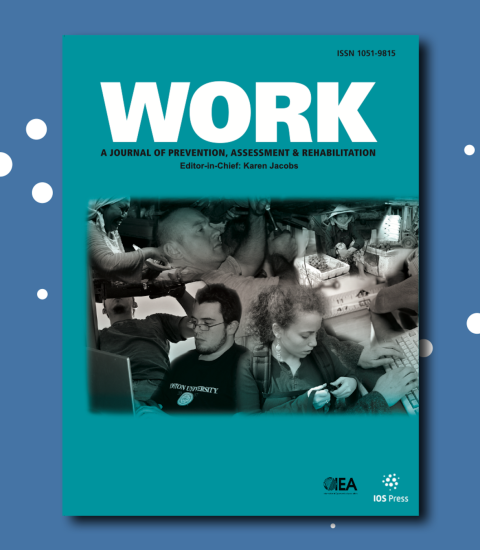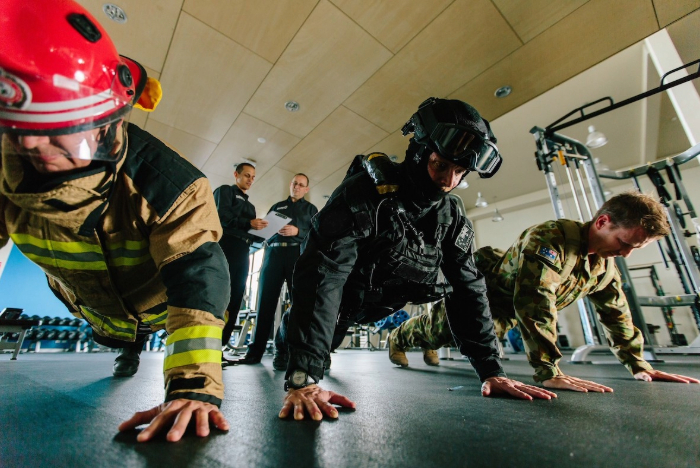
Guest editor Professor Rob Orr, from the Tactical Research Unit and Faculty of Health Sciences and Medicine at Bond University in Australia, explains, "Organizations face challenges in the development and implementation of PES. How can they bridge the gap between science and organizational practices? How can they sustain recruitment amid declining fitness levels? And how can they measure success? Another challenge lies in effectively balancing the physical, cognitive, and psychosocial demands in the workplace to ensure that individuals and teams can fulfill all aspects of their job roles, not just the physical requirements."
The physical elements and requirements for different occupations, and even within occupational subgroups, can vary and as such, job tasks analysis and subsequent PES need to be developed specifically for a given occupation. PES are being used to assess physical capacity in order to ensure that individuals can perform necessary physical tasks safely and effectively. PES can help:
• Establish a baseline level of physical fitness or capabilities required for specific roles
• Mitigate the risk of employing physically unfit individuals in physically demanding jobs, which can be costly, both in human and economic terms
• Ensure that an employee is physically capable of completing the tasks of a job to at least the minimum acceptable standard, and provide employees and potential employees with a target to reach and sustain
• Decrease the potential for injury, thereby providing a “duty of care” to all employees
• Base retirement or transition to a less physical role on capacity rather than an arbitrary age
• Provide feedback on rehabilitation and return to work
• Encourage self-training, self-evaluation and a healthier lifestyle
• Increase confidence of individuals and teams

Dr. Gemma Milligan, the Chair of the PES committee, notes, "Going forward, we envision the expansion of the PES methodology to aid in physical conditioning and return-to-work planning for personnel. Another benefit of the application of PES is that it can support the recording of data to enable the subsequent review and success of PES. Finally, we see the exploration of female/age-inclusive versus female/age-specific solutions as a promising future avenue."
Editor-in-Chief of WORK Karen Jacobs, OT, EdD, OTR, CPE, FAOTA, Sargent College of Health and Rehabilitation Sciences, Boston University, adds, “I am delighted to publish a special issue that spotlights the diverse physical elements, requirements, and applications of PES frameworks across a spectrum of physically demanding occupations. This issue represents a significant milestone in our understanding of occupational fitness, and it's incredibly exciting to be at the forefront of such pivotal discussions.”
This special section of the journal WORK contains 16 contributions concerned with the identification of tasks, physical requirements to perform tasks, and assessment batteries and associated outcomes. It is based on the Fourth International Physical Employment Standards Conference on Perspectives, Themes and Future Direction held at Bond University, Gold Coast, Australia, in February 2023, which was attended by researchers, practitioners, and policymakers working within the military, law enforcement, fire and rescue, paramedicine, astronautics, sport, and industry sectors from 10 nations.
# # #
NOTES FOR EDITORS
WORK, Volume 77, Issue 4, published by IOS Press
Special Section: Physical Employment Standards
Guest Editors:
Robin M. Orr, Tactical Research Unit, and Faculty of Health Sciences and Medicine, Bond University, Robina, QLD, Australia
Gemma S. Milligan, School of Sport, Health and Exercise Science, University of Portsmouth, Portsmouth, UK
Sam D. Blacker, Occupational Performance Research Group, Institute of Applied Sciences, University of Chichester, Chichester, UK
Jace R. Drain, Human and Decision Sciences, Defence Science and Technology Group, Melbourne, VIC, Australia
Tara Reilly, Human Performance Research and Development, Canadian Forces Morale and Welfare Services, Ottawa, ON, Canada
Etienne Chassé, Human Performance Research and Development, Canadian Forces Morale and Welfare Services, Ottawa, ON, Canada
Andrew Siddall, Human Performance Team, Defence Science and Technology Laboratory, Salisbury, UK
Stephen A. Foulis, Military Performance Division, U.S. Army Research Institute of Environmental Medicine, Natick, MA, USA
Helen Kilding, Sports Performance Research Institute New Zealand, Auckland University of Technology, Auckland, New Zealand
Veronica Jamnik, School of Kinesiology and Health Science, York University, Toronto, ON, Canada
Articles are available to credentialed journalists upon request. Contact Diana Murray at +1 718-640-5678 or d.murray@iospress.com. The Guest Editors and authors may be contacted via Karen Jacobs, OT, EdD, OTR, CPE, FAOTA, Sargent College of Health and Rehabilitation Sciences, Boston University, at kjacobs@bu.edu.
The 5th International Physical Employment Standards Conference will take place in February 2025 in Oklahoma, USA, and will focus on the PES implementation and review, physical conditioning, health and rehabilitation, and physical diversity in the workplace. For more information contact IPESconference@gmail.com or visit https://www.linkedin.com/company/ipesconference.
ABOUT WORK: A JOURNAL OF PREVENTION, ASSESSMENT & REHABILITATION
WORK: A Journal of Prevention, Assessment & Rehabilitation is an interdisciplinary, international journal that publishes high quality peer-reviewed articles covering the entire scope of the occupation of work. The journal's subtitle has been deliberately laid out: The first goal is the prevention of illness, injury, and disability. When this goal is not achievable, the attention focuses on assessment to design client-centered intervention, rehabilitation, treatment, or controls that use scientific evidence to support best practice. https://workjournal.org
ABOUT IOS PRESS
IOS Press, now part of Sage, is an international scientific, technical, medical (STM) publishing house established in 1987 in Amsterdam. We produce around 90 journals and 70 books annually in a broad range of subject categories, primarily specializing in health and life sciences (including neurosciences, medical informatics, cancer research, and rehabilitation) and computer sciences (including artificial intelligence, data science, and semantic web). In addition, we offer specialized services that support scientific advancement. www.iospress.com
ABOUT SAGE
Sage is a global academic publisher of books, journals, and library resources with a growing range of technologies to enable discovery, access, and engagement. Believing that research and education are critical in shaping society, 24-year-old Sara Miller McCune founded Sage in 1965. Today, we are controlled by a group of trustees charged with maintaining our independence and mission indefinitely. https://group.sagepub.com
